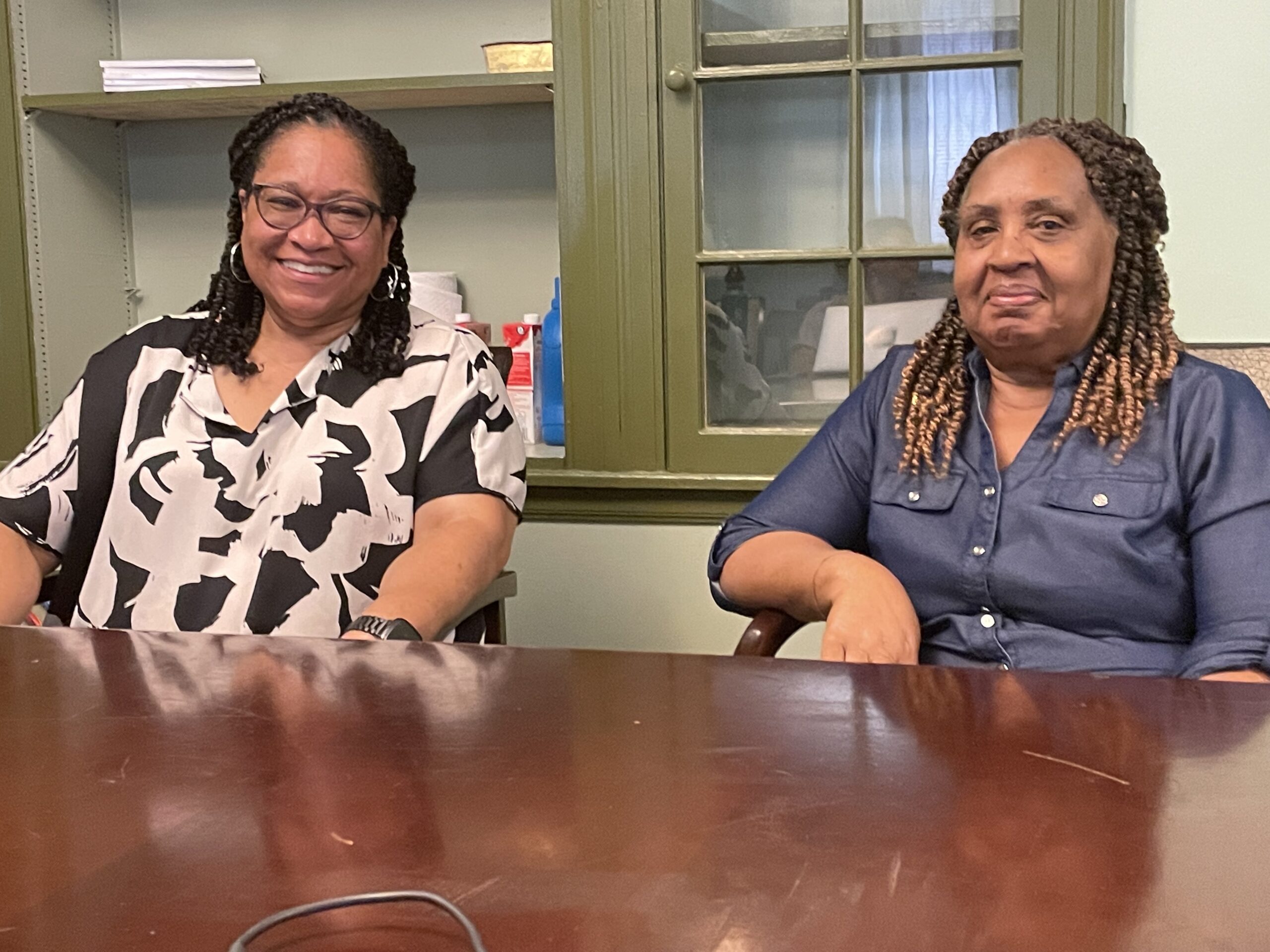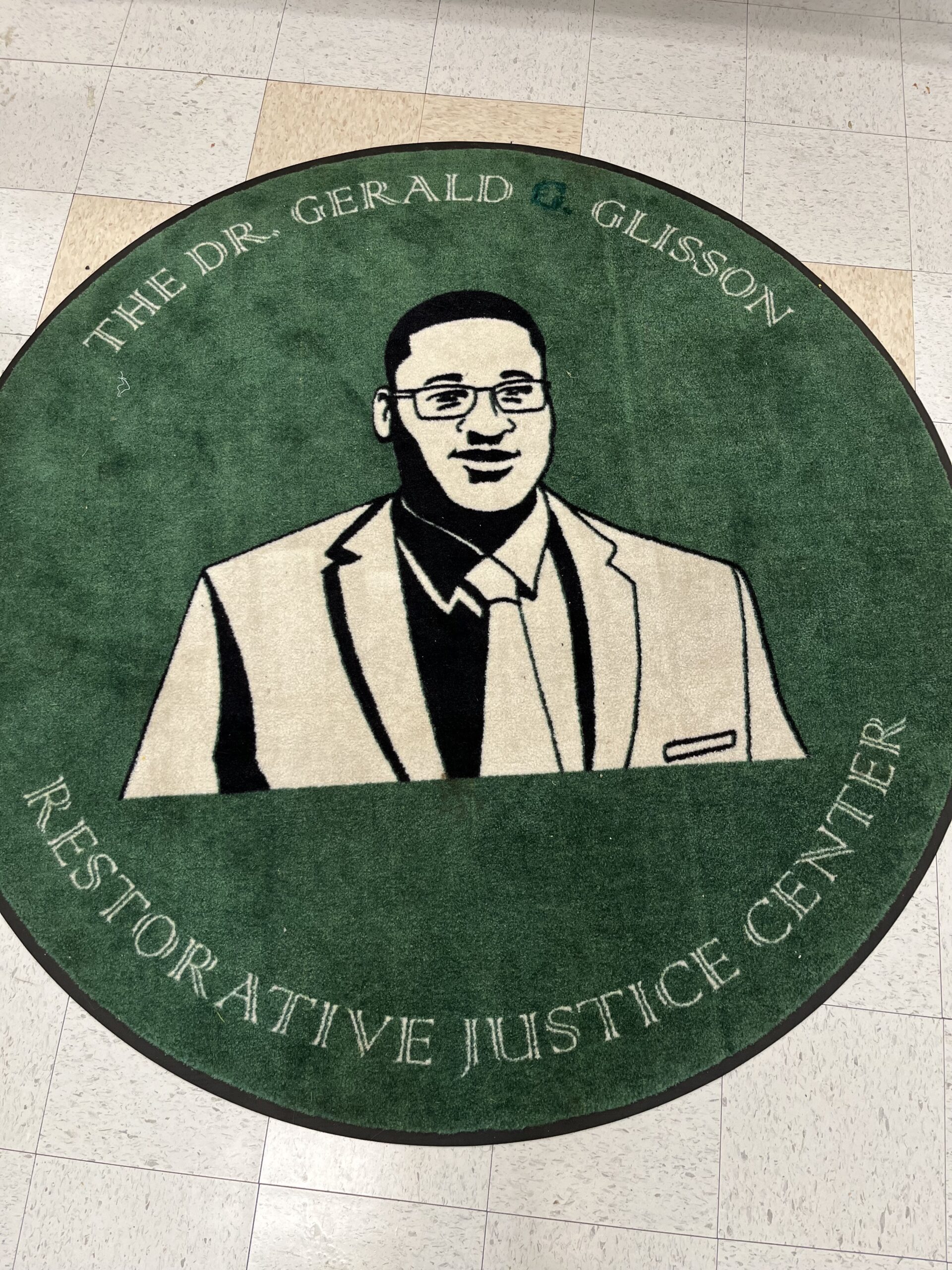Co-Governing Toward Multiracial Democracy: Restorative Practice in Paterson, NJ
With a clear vision and unflagging commitment, community members have helped move an entire school district from punitive to restorative practices that center the learning and well-being of all children in school.
Introduction
FOR YEARS, THE PATERSON, NEW JERSEY, COMMUNITY struggled with an out-of-control school disciplinary system. Children were suspended for rolling their eyes. Kindergarteners were being suspended, losing class time in a critical period in their development.1 According to the district code of student conduct, there were 27 ways a student could be suspended for level one infractions, with up to 70 percent of students getting suspended in a year.
Community members had been pushing back for years through the Paterson Education Fund (PEF) and the Parent Education Organizing Council (PEOC), two local nonprofits that focused on education advocacy and organizing, respectively. The push for change began with two Black women—Linda Reid and Rosie Grant. Over the course of a decade, they used their positions within the PEF and the PEOC to organize their community—parents, grandparents, students, teachers, principals, administrators, and the district superintendent–to embrace a new approach to school discipline. With additional support provided by the Dignity in Schools campaign, they successfully introduced restorative practices in the school system, and in so doing, changed both the policy and the culture around school discipline in Paterson. To date, they have introduced restorative practices in 19 out of 52 schools in the district. The ultimate goal is to have full implementation in every public school in the district by June 2023.
Today, Paterson community members have meaningful influence and power, which has led to a genuine responsiveness by school district officials and an expansion of its vision for restorative practices. Members of the PEF are on multiple task forces and teams that drive decision-making within the school district. These formal structures have helped create more collaborative decision-making between the community and the school district. In this way, the push for restorative practices has provided opportunities for deeper democratic participation within the school system.
While the policy shift towards the use of restorative practices is the initial goal, the long- term cultural shift is equally important. Without culture change, the new policies would too easily be rolled back and would be susceptible to changes in administration. Because the PEF provides a sustained voice for restorative justice, both policy and cultural changes are more durable.
History
THE PUNITIVE PRACTICES FOUND IN PATERSON were part of a larger nationwide pattern. Ever since its inception, the public school system in the U.S. has created barriers towards realizing the human right to a quality education for all students. The 1990s ushered in the era of “zero tolerance” both in schools and in the criminal legal system.2 This was based on the disgraced theories of Broken Windows Policing, which posited that smaller acts of vandalism and petty crime (or behavior that was only technically a crime, such as hanging out in a park after dark) required extreme punishment in order to deter other crimes, and the “superpredator,” the myth that there were some young people who were innately so dangerous to society that they needed to be locked up forever. The mindset behind these policies were profoundly punitive and ultimately devastating, with students of color, especially Black Americans, suffering the most severe consequences. Small mistakes could destroy lives, and millions of people were sucked into the maw of a hyper-aggressive criminal legal system.
While the new “tough on crime” approach and “three strikes you’re out” laws are perhaps more well known, the same set of principles also began to be used in schools across the country without a public discourse concerning their harmful impacts. Police officers were stationed in schools, ostensibly to protect students, but in reality, their presence led to the criminalization of children. And with or without an actual police presence, children were getting suspended and expelled at alarming rates, with every suspension leading to an increased likelihood that a student would not complete school or would have some involvement in the criminal legal system.3
As “exclusionary discipline” became the norm, kids were being denied their right to a quality public education through lengthy suspensions and expulsions that pushed kids out of the classroom, and inexorably towards the carceral state. Eventually, this became known as the school-to-prison pipeline.
Kids were being arrested and taken to jail for minor infractions, and excluded from school via extremely high rates of suspensions and expulsions. In Los Angeles, students who were late to school (even if it was because they were dropping off a sibling at another school) faced punitive fines they could not afford to pay, which snowballed into criminal records.4 In Mississippi, corporal punishment was used with the predictable consequence that kids would drop out of school rather than face a “paddling.”5
But this was not just an overly aggressive approach to discipline that needed reform. Instead, it was a systemic decision to “keep communities of color poor and lacking in power” through “racial domination” in the schools.6 Often referred to as pushout, there are many factors that discourage or prevent students from completing their education, including unwelcoming school climates, harsh and exclusionary discipline like suspensions, expulsions and arrests, and curriculum that is disconnected from students’ cultures and communities.
The movement to address the school-to-prison pipeline began in different parts of the country. In Holmes County, Mississippi, in the 1990s, Black parents and community organizers called for the “Prevention of Schoolhouse to Jailhouse.” The movement gathered steam in the 2000s, spearheaded by Padres Y Jovenes in Colorado, Black Organizing Project in Oakland, Power U Center in Miami, and CADRE in LA. Each community had its own unique issues and context, but the movement was always based in community organizing, with a focus on racial equity and educational justice.
In 2006, the movement continued when the Dignity in Schools Campaign was founded to challenge the systemic problem of pushout in schools and to dismantle the school-to-prison pipeline. DSC’s vision of educational justice is grounded in a human rights framework, with restorative justice, a practice focused on rehabilitation and reconciliation, acting as a pillar in that vision.7
To date, DSC has more than 100 member organizations in its coalition. It provides support to local organizations across the country, building a national movement of parents, youth, organizers, advocates, and educators by providing key materials and funding, while building connections between organizations. The importance of this would become evident in Paterson.
Restorative Practices
With its roots in feminist, Black, and Indigenous traditions, restorative practice is not just a policy shift, it is a profound cultural change. It banishes the mindset and practices centered on discipline and punishment that have been a key component of a racialized system that keeps communities of color poor and disenfranchised, and instead embraces the idea that mistakes are opportunities, and that everyone’s humanity must be honored. In so doing, it interrupts the cycles of anger, abuse, and violence that are prevalent in so many lives, and, when used within the school system, creates a community in which children can once again learn to trust each other and the adults who wield so much power in their lives. The effects are profound, as communities become safer, children stay in school, and lives are not destroyed through harsh discipline practices. As a result, community members, both children and adults, learn important life skills such as conflict resolution, trust building, and the fine art of empathy.One key element of restorative justice is called “the circle.”27 Circles create a space with minimal hierarchies, where students and adults learn how to listen to and understand one another. Schools can use circles for a daily or weekly check-in. But they also can be used when problematic behaviors rear up. Using a practice of respectful, curious questions, the emphasis is always on solving the root of a problem and repairing the relationship, not defining a person as the problem. Students learn to create a narrative about themselves in which they address conflicts, trust one another, and show the courage to be vulnerable. The respectful, non-judgmental approach that is the bedrock of circles can thus be continued outside of a circle, in the one-on-one encounters between adults and students that add up over the course of days, weeks, and months into a culture of respect and trust.
In cases of serious harm, mediations, conferences, and harm circles are other useful restorative justice practices. Adults engaged in restorative justice use empathy and understanding, not blame, to get at the root of the problem, and allow the student to take responsibility, which a student can do without the fear of harsh discipline. Within this context, an open admission of mistakes made, and an honest attempt to repair harms are the ultimate goal–not punishment.
Often, the root of the problem can be found outside the confines of school, and in those cases a circle might include family members and other members of the community, which can become a collective process to identify how to repair harm. In this way, Restorative Justice creates opportunities for community participation and decision making, as well as an opportunity for the extended community to come into contact with restorative practices and absorb a new approach to conflict.
“Solutions Not Suspensions”
PATERSON IS A CITY OF JUST OVER 160,000 with 25 percent living in poverty.9 The school district serves a large majority of students of color, including 68 percent who are Latina/o/x and 21 percent who are Black.10
More than 10 years ago, a Paterson Education Fund program manager, Linda Reid, learned that her granddaughter had been suspended three times. The child was in kindergarten. Reid started asking around and heard more stories about how children in the school district were getting suspended for, as she put it, “stupid stuff”—rolling their eyes and sucking their teeth, for example.
She connected with Fernando Martinez, an education organizer in New Jersey. When ACORN became defunct, the pair founded the Parent Education Organizing Council to tackle the overreliance on suspension and other education issues in Paterson. When Martinez then left to become national organizer for DSC, he connected Reid and Rosie Grant, the executive director of the PEF, to DSC. DSC suggested that Reid look at the district data, a tactic their members had successfully used in the past.
Reid pulled the report cards from the state of New Jersey website, focusing on the suspension and expulsion data. Up to 70 percent of students were being suspended in a year, with the number of suspended high school students being even higher. When she presented a report on the data to the school board and administration, they initially did not believe the numbers—until she pointed out that she was using their own data. The deputy superintendent at the time, Eileen Shafer, indicated that she was open to the idea of changing the school policies, and gave them the charge to follow through. Thus began years of, as Reid and Grant like to put it, “gentle persuasion applied relentlessly” by the PEF and PEOC, to change nothing less than the culture and the policy of school discipline in Paterson.
Both women—Black, brilliant and determined—had worked for years to bring educational justice to the district, both as part of the PEF and the PEOC. The PEF, founded in 1983, is an advocacy group, with 51 percent of the board represented by local businesses, such as a print shop, a local lawyer, and the head of the local chamber of commerce. With headquarters in the office space of a local church, the PEF works with the whole community around educational issues. The PEOC spearheaded their organizing work. As Grant explained, “The PEF builds relationships; the PEOC goes hard.”

Both organizations focused on systematic change, with the PEF relying more on the power of persuasion, while the PEOC focused on claiming power that is rightfully theirs. Combined, the organizations created a classic inside-outside dynamic, with the PEF using their relationships to build support, while the PEOC could use a more confrontational approach to demand change.
At the same time, DSC, in partnership with the Opportunity to Learn Campaign, was leading a campaign calling for schools, districts, or states to enact a moratorium on out-of-school suspensions in favor of putting more positive alternatives in place called the “Solutions Not Suspensions” campaign. PEF and PEOC joined this campaign as it mirrored the goals of their own work in Paterson.
DSC suggested they compare the district’s code of conduct to DSC’s model code.11 Reid and Grant began having lunches and dinners with the school board commissioners and other administrators to try to get them to change the school code of conduct and replace it with a restorative justice approach. When the Federal reauthorization of the Elementary and Secondary Education Act (ESEA) was launched, DSC then used their research and connections at the federal level to find out who the new New Jersey ESEA officers were before they had even been announced so that Reid and Grant could connect with them to put “Solutions not Suspensions” on the New Jersey agenda. Eventually, Paterson would announce a moratorium on K-2 suspension one year before the state did.
The PEF and PEOC’s success at securing the moratorium was undergirded by the support of outside partners. DSC provided them with materials and financial support, but perhaps most importantly, it connected them to leaders from other communities who could provide invaluable support and guidance. Specifically, they connected them to Sheila Warren with the Portland Parent Union in Oregon, and Karen Lynn Morton from COFI/POWERPAC and Woman of God’s Design in Chicago. Known as Mama Lynn and Mama Sheila, both women provided key support and training in restorative practices.
Mama Lynn came to Paterson to lead a training in restorative practices. Later, 11 educators and administrators, including Grant and Reid, went to Portland for a week-long master training with Mama Sheila. There, they practiced having circle conversations, learned how to build values, how to come to agreements, how to hear what is not being said, and how to support people when they become vulnerable. Later, Grant and Reid attended a training in Baltimore and did an online training with the International Institute for Restorative Practices once COVID hit. They then took all the different pieces of what they had learned and created their own approach to restorative circles.
Armed with the training and the conviction that this approach worked, and backed by the essential support of Ms. Shafer, who later became the district superintendent, they began the work of convincing principals, discipline officers, and teachers to make the necessary changes to integrate restorative justice practices in their schools. Meeting after meeting, lunch after lunch, Grant and Reid used years of relationship-building and trust—plus hard data—to convince key individuals to try the new approach. Their infinite patience and dogged determination to win over converts one at a time proved fruitful.
But friendly, private conversations weren’t going to do the trick by themselves. They also had to organize and advocate at every turn. The women went to school board meetings; made presentations to the superintendent and the cabinet, as well as the board of commissioners; rallied outside of City Hall; and wore construction vests and hard hats to the School Development Authority board meeting in Trenton to organize for restorative practices, adequate facilities, and other education justice issues. The two organizations’ approaches complemented one another. As executive director of the PEF, Grant might be in a meeting with the school board, while Reid was outside leading a protest organized by the PEOC.
As schools began to adopt the new practices and see the positive effects, it became easier to convince the next principal, the next discipline officer, and the next teacher. One by one, schools in the district began to adopt restorative practices.
There was resistance and it came in all forms—from administrators who were wedded to the old way of doing things and honestly believed that a “zero-tolerance” approach was the most effective way, to teachers who argued that they didn’t have time to implement restorative practices. But Grant and Reid kept at it. “How can a child learn in a class if they don’t feel safe or comfortable?” they asked teachers. “We are doing this for the kids,” they reminded administrators. “Emotional learning is an important part of education,” they told anyone who would listen.
Reid spent an entire year slowly but surely changing the mind of one powerful administrator, Dr. Gerald Glisson, who started out convinced that restorative practices did not work. After months of patient nudging by Reid and seeing for himself the positive impact restorative practices were having on schools, Glisson became one of the leading advocates for the work. Sadly, he passed away from COVID, but his name is now emblazoned across one of the Restorative Justice Circle Rooms.

Before, the only option to handle a student who was misbehaving was to mete out various forms of punishment, but now administrators and teachers had a way to approach kids who were acting out. They could go to the peace room, have a circle, work it out, and come to an authentic resolution.
For example, Michael Hill, the principal of operations at Paterson’s John F. Kennedy High School, noticed that behavior was shifting after his school began to embrace restorative practices. He saw how important it was to help kids talk things out, figure out not “what” they had done but “why,” and to delve into what else was going on in their lives, thus enabling students to find a true resolution and peace. In particular, Hill notices that kids with academic and behavioral challenges, who often came to school feeling dismissed and ignored, now felt seen and understood.
A high school student punches a window and breaks it, seemingly for no reason. In the past, the path forward would be clear: suspension, perhaps expulsion. A loss of class time. Maybe a first brush with the criminal legal system, one that might be followed by others. But this happened in Paterson, so things went differently. The discipline officer knew to ask thoughtful, non-judgemental questions. What was going on? Why was he so upset?
The answer was devastating. The child had witnessed a classmate die in a drowning accident the previous weekend, and felt guilty and angry. Instead of punishment, the school rallied around him, making sure he got the help and support he needed from his family and from trained professionals. Instead of having the trajectory of his life knocked off course by tragedy, he was able to begin to heal and move forward with his life.
Vanessa Serrano, principal at Public School Two, explained that restorative justice is 80 percent relationship building and 20 percent harm reduction. She sees the work the district is doing through the lens of racial justice and equity as it “reduces the predictability of who succeeds and who fails.”
While restorative practices have yet to be introduced in every school, the district has rewritten its code of conduct, with the input of parent and student voices. Once, there were 27 ways a student could be suspended for a level one infraction. Today, there are only five.
Introducing restorative practices in schools and changing the code of conduct are far from the only work the PEF is engaged with. They began the “Breakfast After the Bell” campaign to address food apartheid in Paterson. Under the program, breakfast is served in the classrooms during first period to cut down on latenesses and to make sure no student starts the day hungry. The PEF started with one principal in one school, demonstrated that it worked, and got eight schools to implement the program the following year.
The PEF has also successfully changed school policy on absences. Previously, students who arrived late five times were charged with an absence. Through PEF’s advocacy, the district has changed that policy so that a late arrival is simply a late arrival, and an absence is an absence. They also pushed the district to ensure the curriculum was in alignment with state testing, so students would have a better chance to pass and avoid being forced to attend summer school. Recently, the PEF noticed that all the district’s new textbooks and school supplies were going to the wealthiest and whitest schools in Paterson. After the usual denials and disbelief, the district examined the data, saw a racially disparate pattern, and agreed to change its policies.
Conclusion
THE PATERSON MODEL IS AN EXAMPLE of how powerful organizing campaigns, led by coalitions that build trust with their communities: students, families, teachers, school administrators and staff–can move the change that community members want. Using years of relationship building with the district, backed up with powerful data, the PEF and the PEOC used an inside-outside strategy to both make alliances with government entities and to demand more and faster movement toward the changes they wanted to secure. The PEF has an MOU with two district schools and is a welcome partner within the district. Members of the PEF have joined the district’s facilities team, the search team, the disciplinary task force, and the attendance task force. In short, they have built a true partnership between the community and the district. Throughout it all, they had crucial support from a national organization in DSC, which provided essential funding, materials, and training.
Mixed in with all the conversations, board meetings, and rallies, the Paterson school district has undergone a profound cultural change, one that has entrenched restorative practices within the community, and that will last long after the current leadership is gone. The power of kindness, empathy and trust is hard to deny, when given a chance.
The school superintendent, who has been such a strong ally, will retire next year. Before she retired, she was determined to institute restorative practices in every school in the district. In November, 2022, she began carrying out her goal, and the district announced that it was implementing restorative practices district wide. PEF has been awarded a bid to train a leadership team in each of 44 schools by June 2023. While they will miss her support, neither Grant or Reid is worried about who will replace her. In fact, Grant has been appointed to the hiring committee for her replacement and feels confident that any of the top three recommended candidates will support restorative practices.
Meanwhile, the movement has spread beyond Paterson; New Jersey is establishing four Restorative Hubs in Newark, Trenton, Camden, and Paterson, where restorative practices are being scaled throughout these communities, serving as examples for the rest of the state and the country.
Endnotes
1 Álvarez, Brenda. “School Suspensions Lead to Stark Losses in Instructional Time.” NEA, https://www.nea.org/advocating-for-change/new-from-nea/school-suspensions-lead-stark-losses-instructional-time.
2 “S2PP 101.” endzerotolerance. Accessed November 10, 2022. https://www.endzerotolerance.org/general.
3 Fabelo, Tony, et al. “Breaking Schools’ Rules.” CSG Justice Center, 23 Apr. 2020, https://csgjusticecenter.org/publications/breaking-schools-rules/.
4 ̊ Jim Freeman, Daniel Kim, and Zoe Rawson, “Black, Brown, and over-Policed in L.A. Schools – Fix School Discipline,” accessed October 26, 2022, http://www.fixschooldiscipline.org/wp-content/uploads/2020/09/5. Black-Brown-and-Over-Policed-in-LA-Schools.2013.pdf.
5 Diana Hembree, “‘Corporal Punishment Is Violence’: Black Communities Vow to Ban School Paddling,” MindSite News, May 4, 2022, https://mindsitenews.org/2022/05/01/corporal-punishment-is-violence- black-communities-vow-to-ban-school-paddlings/.
6 Warren, Mark R. Willful Defiance: The Movement to Dismantle the School-to-Prison Pipeline. Oxford University Press, 2022,16.
7 “Restorative and Transformative Justice Toolkit.” Dignity in Schools. Accessed November 10, 2022. https://dignityinschools.org/toolkits/rj-tj-resources/.
8 Cohen, Richard Jaffee. The Transformative Nature of Restorative Narrative Justice in Schools. 2018, http://restorativeschoolsproject.org/wp-content/uploads/2018/06/RCohenArticle.Revised5.pdf.
9 “Paterson, New Jersey Population 2022.” Paterson, New Jersey Population 2022 (Demographics, Maps, Graphs), 2022, https://worldpopulationreview.com/us-cities/paterson-nj-population.
10 “Paterson Public School District – U.S. News Education.” Paterson Public School District, https://www.usnews.com/education/k12/new-jersey/districts/paterson-public-school-district-111799.
11 “Model School Code on Education and Dignity.” Dignity in Schools. Accessed November 14, 2022. https://dignityinschools.org/toolkits/model-code/.

